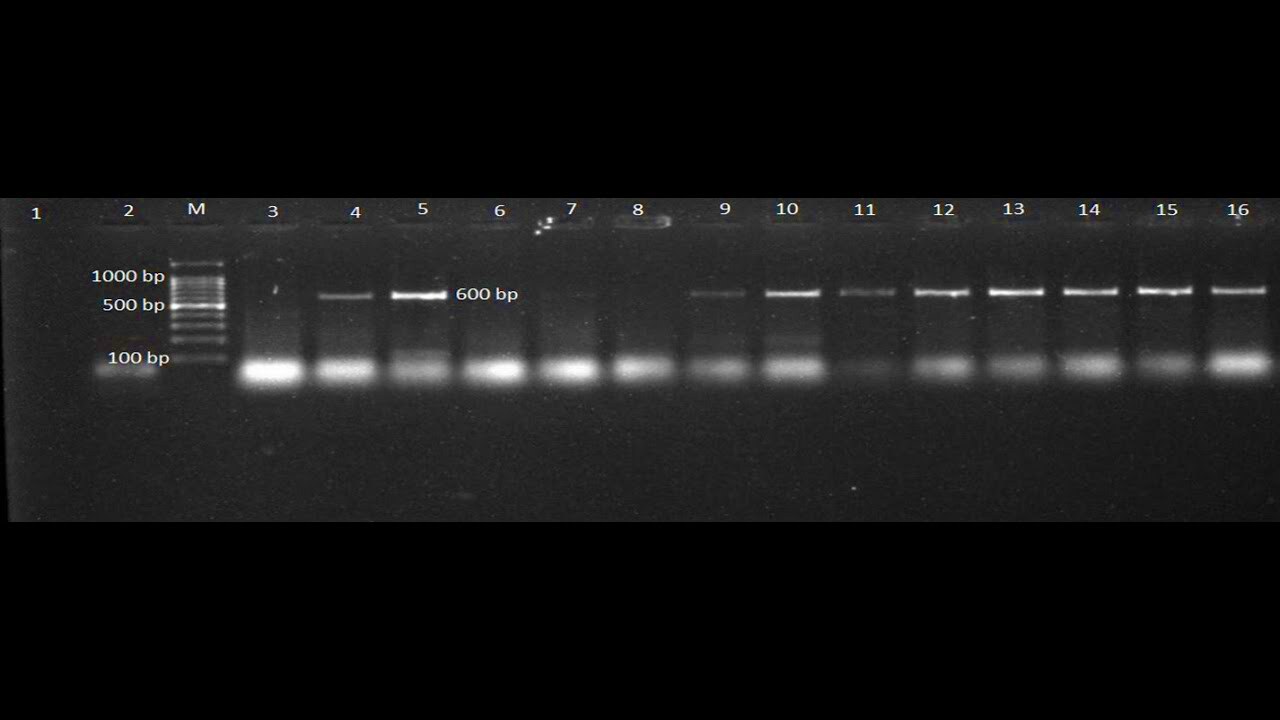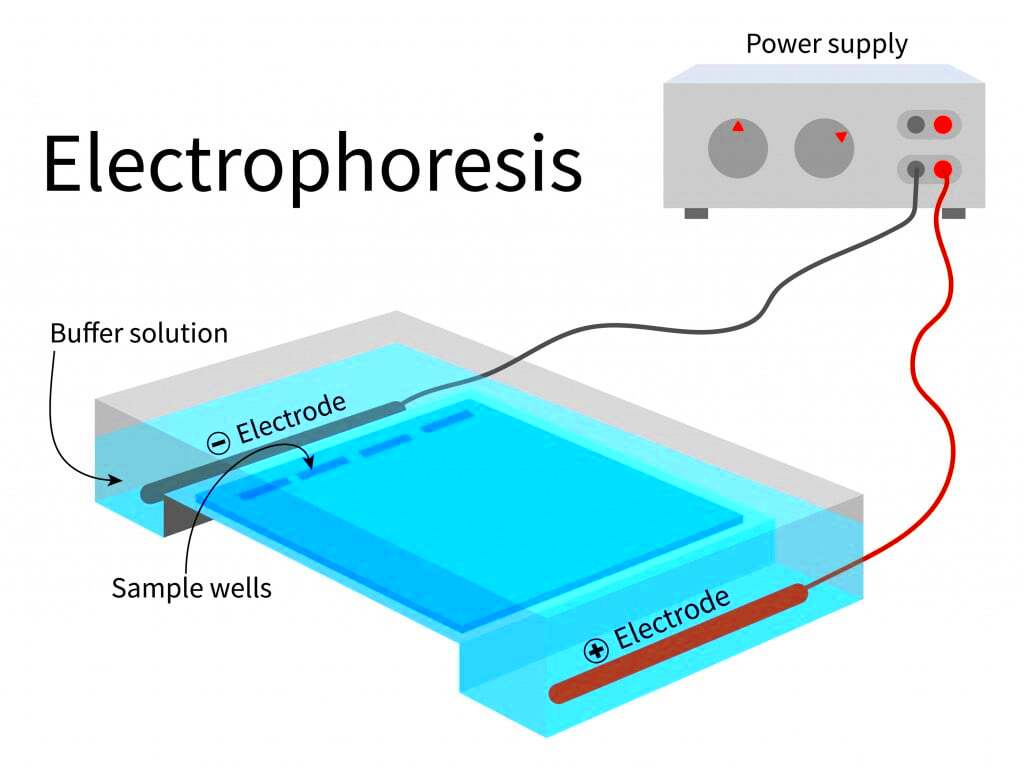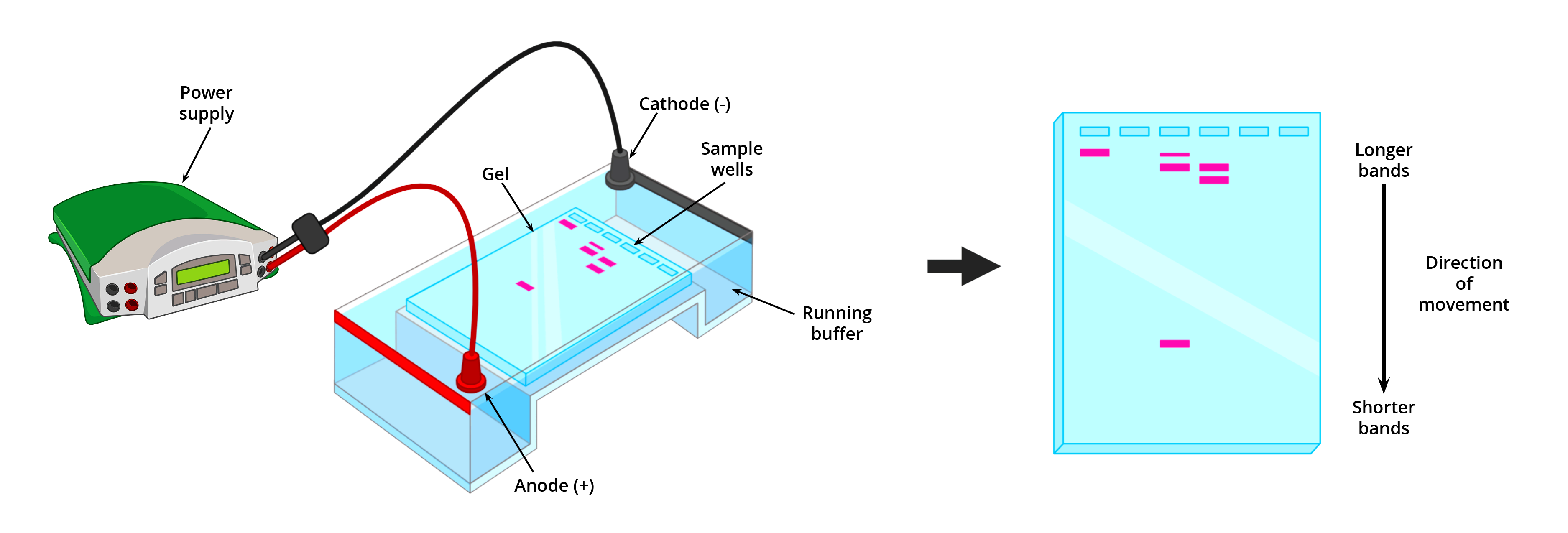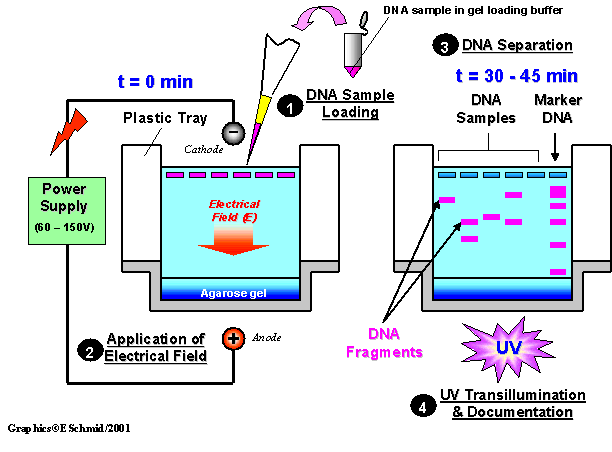Gel electrophoresis is a remarkable laboratory technique for analyzing macromolecules including deoxyribonucleic acid (DNA), ribonucleic acid (RNA) and proteins. This approach has applications in genetic research, forensic studies and biotechnology. An electric field is applied causing molecules to migrate through a gel matrix enabling scientists to discern variations in size and type. In this blog post, we will look at gel electrophoresis inside out and explain how labeling images from such experiments help make sense of the results.
Understanding the Gel Electrophoresis Process

The principle of gel electrophoresis is based on separating charged molecules in a gel medium, mostly made of either agarose or polyacrylamide. Below is a simplified explanation of the process:
- Preparation: A gel is prepared by dissolving agarose or polyacrylamide in a buffer solution and allowing it to solidify in a casting tray.
- Loading Samples: Samples containing DNA, RNA, or proteins are mixed with a loading dye and carefully placed into wells in the gel.
- Applying Electric Current: An electric current is applied, causing the negatively charged molecules to migrate toward the positive electrode. Smaller molecules travel faster than larger ones.
- Visualization: After running the gel for a specified time, it’s stained with a dye, such as ethidium bromide, to visualize the separated molecules.
Аllows researchers to analyze samples size and purity as such basic tool in molecular biology.
Also Read This: How to Record YouTube Audio Using Audacity
Importance of Labeling in Gel Electrophoresis

There are several reasons why it is important to label the images obtained from gel electrophoresis:
- Data Interpretation: Clear labels help researchers quickly identify and analyze the bands in their gels, leading to more accurate conclusions.
- Reproducibility: Proper labeling ensures that others can replicate the experiment and verify results, a cornerstone of scientific research.
- Documentation: Well-labeled images provide a permanent record of experiments, which is essential for publication and sharing findings with the scientific community.
In the process of gel electrophoresis, this stage is very important because without proper labeling, it becomes difficult to articulate results. Furthermore, precise annotations foster comprehension and promote teamwork among scientists.
Also Read This: How to Edit a Project in Behance
Common Techniques for Labeling Gel Images

The ability to label images produced by gel electrophoresis looks like an impossible task but there are some techniques that can easily help you achieve it. Let’s look at some methods that researchers use frequently for labeling their gel images:
- Manual Annotation: This is the simplest method, where researchers use software to manually add labels and annotations directly onto the image. Tools like Microsoft PowerPoint or even basic photo editors can be utilized for this purpose.
- Digital Markers: Some software allows for the use of digital markers to highlight bands or areas of interest. This can include arrows, boxes, or circles that draw attention to specific results.
- Image Overlays: Overlaying labels on top of the gel image using transparent text boxes is another effective technique. This keeps the original image visible while providing necessary context.
- Color Coding: Using different colors for different samples or markers can help differentiate between various components of the gel. For instance, one color could represent DNA ladders, while another represents sample bands.
- Standardized Labels: Creating a template for labels that includes essential information such as sample names, concentrations, and running conditions can streamline the labeling process and ensure consistency across images.
Professionalism can be improved in your gel images as well as clarity by employing these methods which helps interpreting results easily.
Also Read This: How to Convert an Image to EPS Format
Best Practices for Labeling Gel Electrophoresis Images
By sticking to the best practices when labeling gel electrophoresis images, one could enhance the clarity and utility. Here are some important suggestions:
- Be Consistent: Use a consistent font size, style, and color throughout all your labels. This uniformity helps in creating a professional appearance and makes it easier to follow the data.
- Keep It Simple: Avoid overcrowding the image with too much information. Focus on essential details like sample names, sizes, and other critical data.
- Label Clearly: Make sure your labels are legible and placed in close proximity to the relevant bands or regions. This prevents confusion when interpreting the results.
- Include a Key: If you use color coding or symbols, always include a key or legend that explains what each color or symbol represents.
- Save in High Resolution: Always save your labeled images in high resolution. This ensures that the labels remain clear and readable, especially if the image is scaled up for publication or presentations.
If you follow these suggestions, gel electrophoresis images will be easier to read and look better as well, so they can be used more effectively for analysis and presentation.
Also Read This: Unprivate Your Projects on Behance for Public Viewing
Tools and Software for Effective Labeling
If you are equipped with suitable software and tools, tagging images of gels that have gone through electrophoresis could be an easy affair. Here are a few renowned alternatives which can ease and enhance your labeling jobs:
| Tool/Software | Features |
|---|---|
| ImageJ | Open-source software with powerful image processing capabilities. It allows for precise labeling, measurement, and analysis of gel images. |
| Photoshop | A robust image editing tool that offers extensive features for adding text, arrows, and overlays to gel images. |
| PowerPoint | While primarily a presentation tool, PowerPoint’s drawing tools make it easy to annotate gel images quickly. |
| GIMP | A free alternative to Photoshop, GIMP provides many similar features for editing and labeling images. |
| GraphPad Prism | This statistical software allows for graphing and image labeling, making it a great choice for presenting gel electrophoresis results. |
Depending on your specific requirements as well as level of comfort with the software, choosing the right tool can be a daunting task. This is why various scholars prefer the combined use of these tools since they could study in different ways as per their interests.
Also Read This: How to Open a JPEG Image on an iPhone for Easy Viewing
Examples of Well-Labelled Gel Electrophoresis Images
The power of belief rests upon the power of sight. When it comes to helping people comprehend data presentation, well-labeled gel electrophoresis images serve as great pointers. Some examples of commendable labeling include:
- Example 1: DNA Ladder with Samples - An image shows a DNA gel with a ladder on one side and samples labeled with clear tags indicating the source and size (in base pairs). Each band is marked with a ruler for easy reference.
- Example 2: Protein Gel Analysis - In this image, protein bands are labeled with both the protein name and molecular weight. Different colors are used for distinct groups of proteins, enhancing clarity.
- Example 3: Time Course Experiment - A gel image displays bands from samples taken at different time points. Each time point is labeled along with a corresponding legend, making it easy to compare the results visually.
- Example 4: Comparison of Mutant vs. Wild-Type - Here, the gel clearly distinguishes between mutant and wild-type samples. Labels are strategically placed to highlight differences in band intensity or size.
This is a clear demonstration of how well labeling can improve the clarity and use of gel pictures, making it easy for scientists to explain their results in a better way.
Also Read This: How to Make a YouTube Video on iPad With a Complete Guide for Beginners
Frequently Asked Questions
Researchers may pose lots of queries when it comes to labeling gel electrophoresis images. The following are several frequent ones:
- What is the best way to label gel images? - The best way involves using clear, consistent labels that highlight essential information without overcrowding the image. Consider using color coding or symbols for clarity.
- Can I use free software for labeling? - Absolutely! There are many free options like ImageJ and GIMP that offer robust labeling features without the cost of premium software.
- Should I include a legend? - Yes! Including a legend is beneficial, especially if you use different colors or symbols. It ensures that anyone viewing your image can understand the information presented.
- How do I ensure my labels are legible? - Use a high-resolution image and select a readable font size and style. Avoid overly ornate fonts that might confuse readers.
- Is it necessary to label every band? - Not every band needs labeling. Focus on the most critical bands that are relevant to your analysis or conclusions.
Common queries like these will allow your gel images to be explanatory and simple enough for anyone going through it.
Conclusion and Final Thoughts
To summarise, labelling gel electrophoresis images accurately is necessary for right data interpretation and communication in scientific studies. Effective image communication can be realized through strict adherence to recommended practices and appropriate use of tools. It’s worth noting that the aim should be enhancing understanding by avoiding adding irrelevant things that may cause ambiguity in an image.
Try to play around with diverse labeling methods, don’t be afraid to look for software that suits your workflow. Good labeling of images in DNA, RNA or protein gels can undoubtedly influence the way results will be judged.
So, with these insights in mind, get ready for your next gel electrophoresis project and let us know how effective labeling will change your data presentation! Clear labeling therefore does not only improve your research but also eases collaboration and replication in the whole scientific community.

 admin
admin








